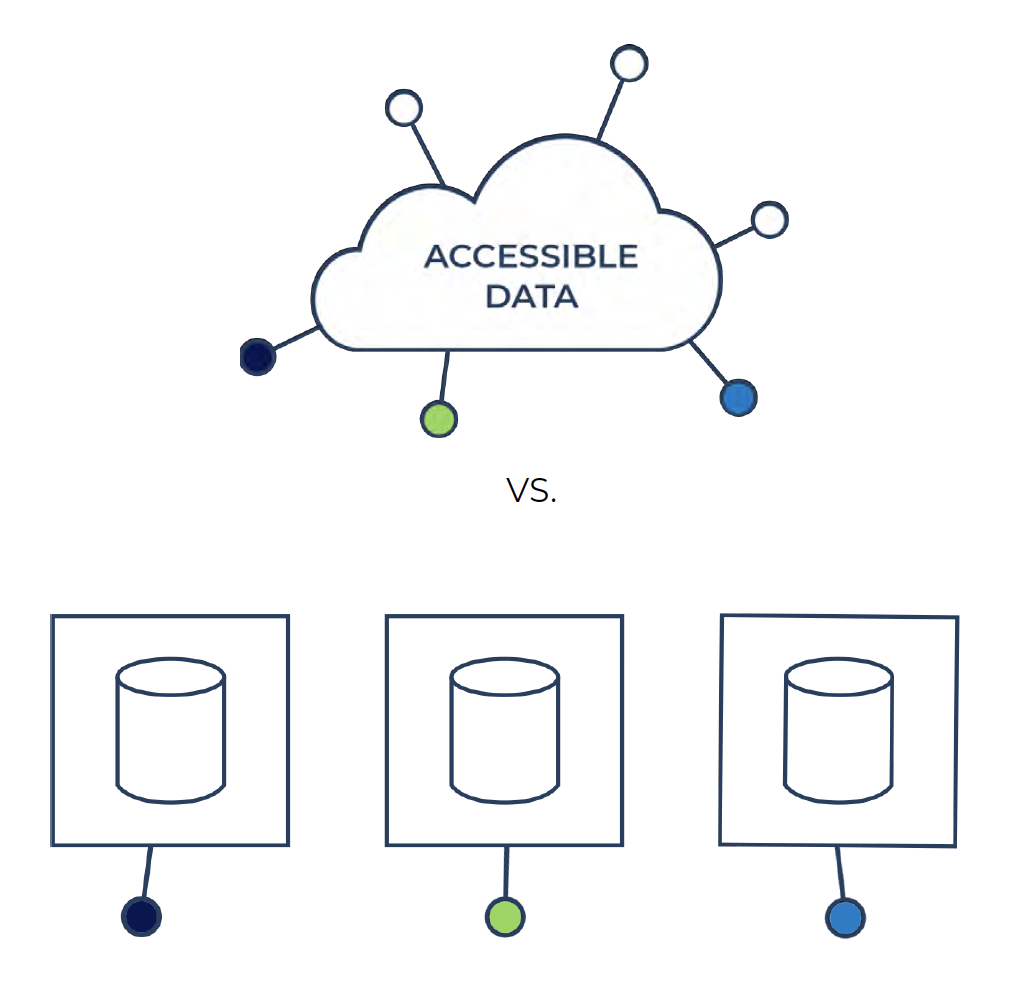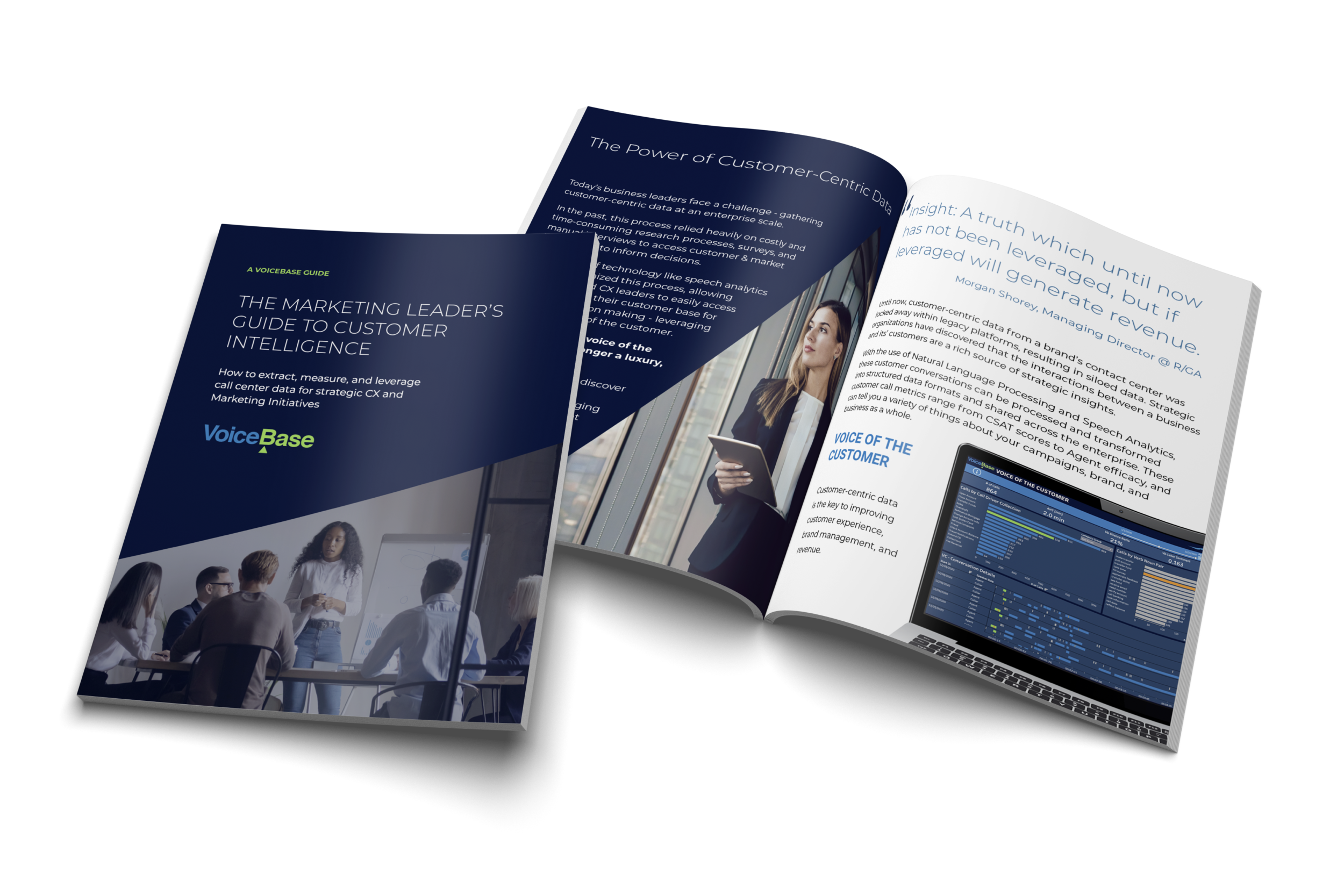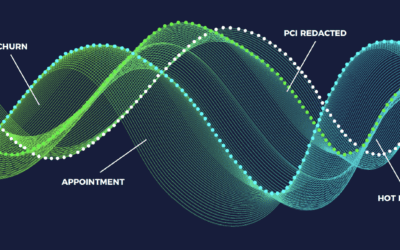The Challenge of Accessing Customer Insights
The advent of big data has spawned a new dimension of how we conduct business on a day-to-day basis. Components such as your website, social media presence, and call center recordings are just a few examples of valuable information sources about your customers and how they interact with your brand.
These insights can inform future business decisions and strategies to provide the best products, services, and experiences to your audience. Identifying a strategy to harness organic customer feedback and insight to drive decisions is a great start. However, the execution of converting unstructured voice data into structured data and analyzed insights is quite a task.
Fortunately, cloud-based automatic speech recognition and analytics solutions like VoiceBase have become the go-to answer for navigating call center data. Speech analytics solutions bridge the gap between the massive volume of data that your call center produces each day to help you provide a number of company-wide improvements.
A 360º Customer and Market View is Essential
With siloed platforms, the multitude of departments in any given organization are making blind decisions without vision of the entire picture. Whether these decisions are around customer experience, root cause analysis or risk mitigation – they are like making bets when you’re only playing with half of the deck.
In today’s enterprise, ‘Voice of the Customer’ and customer experience initiatives are driving broader data needs in the call center. If customer experience is the new battlefield, your agents are on the front lines, and it’s up to you to empower them to win. This pivot to focus on customer experience is often the catalyst for enterprises to move into the cloud and take advantage of the many benefits of a modern architecture. A de-siloed ecosystem is the only way to gather and analyze customer data across every platform and touchpoint to become a truly customer-focused organization.
De-Siloing the Data
Today’s enterprise organizations struggle with fractured data across multiple sources.
Sometimes these sources are completely inaccessible, such as call audio files tucked away on a server inaccessible to the very teams that would benefit from it the most.

Most Contact Center call data is hidden, siloed from the rest of the enterprise.
Second only to customers and people, data is a business’ most competitive asset. It can alert, inform and advise on the most impactful decisions a business will make. This asset is so important that there are teams of data scientists and data analysts within every large organization dedicated to tracking KPIs, monitoring trends and predicting or catogorizing what will occur. The modern enterprise should thrive on data for everything from improving customer experience to operational efficiencies. The problem businesses face accomplishing this is that some of the richest data that should be used to deliver these insights is siloed in other departments.
Unfortunately, contact center interactions are often confined to the contact center platform only, and not easily available for the data team to use. This data’s original purpose was for monitoring agent behavior to ensure compliance and improve coaching. These are still popular use cases but the breadth and depth of what insights can be surfaced from customer interactions quickly surpasses just the contact center.
Although marketing teams rely on data for most activity – A/B testing email subjects, digital ads, website information, and social media posts – when a lead calls in from a campaign the data stops. That would be like not getting click-through-rates for your email promotions, imagine that!
Insights from Call Center audio files are also valuable for Sales, Service, and Marketing.
Product teams often ask to sit in on customer calls to better understand what problems they’re facing or what features they request. Imagine being able to view that organic customer feedback on a dashboard and filter based on date, customer level, or product. Almost every department has some burning question that could be answered by digging into a few thousand calls from customers. Until now there was no feasible solution for everyone to have the flexible access required with voice data to solve all of these needs at once.
How to Analyze the Voice of the Customer
Step 1: Capture Voice of the Customer Data
Customer interaction audio files are FULL of important data points for your Voice of the Customer program. Process those files with a quality speech recognition and analytics engine, to turn them into data fit for reporting.
Also consider aggregating this dataset with other key sources of data, such as social media. You can use an AI-Powered text analytics tool to structure this data to be aggregated with voice data.
Example Voice of the Customer Data Sources:
- Online Reviews
- Survey Responses
- Support Emails
- Call Transcripts
- Call Recordings
- Tweets
- Chat Conversations
Step 2: Prepare and Structure Data
You will likely have some unstructured data sources, so you will need a way to transform it into a useful format. For example, call audio recordings are unstructured, raw data, but processing them with a speech analytics tool like VoiceBase transforms them into structured, useful JSON files that are able to be utilized in a reporting or business intelligence tool.
Step 3: Load VOC Data Into a Reporting Tool
Start with a question (or questions). Starting out with specific questions can help guide your voice of the customer program analytics.
The reports you end up generating should be focused on answering these initial questions. For example, if you are the Director of Customer Experience at a call center, you will likely want to structure a report that highlights overall caller sentiment, call outcomes, time to resolution, and other customer-centric data points.
Example Reporting tools for Customer Intelligence Analytics:
Step 4: Gather Customer Analytics Insights
Perhaps one of your sales scripts performs better than another, or even a single sentence used by an agent that is more likely to generate a sale.
Are there trends in customer feedback emotion and sentiment? You can dig into that data and learn the WHY behind the WHAT.
Take the insights you’ve discovered and use them to make data-driven decisions and empower business stakeholders with actions they can take to improve business outcomes.
Voice of the Customer data is a rich and often underutilized source of strategic planning and optimization. If you dug into your contact center data, what would you discover?

Guide to Voice of the Customer Analytics & Insights
Download the Marketing Leader’s Guide to Customer Intelligence and learn how to leverage the Voice of the Customer to improve sales, service, and marketing.


